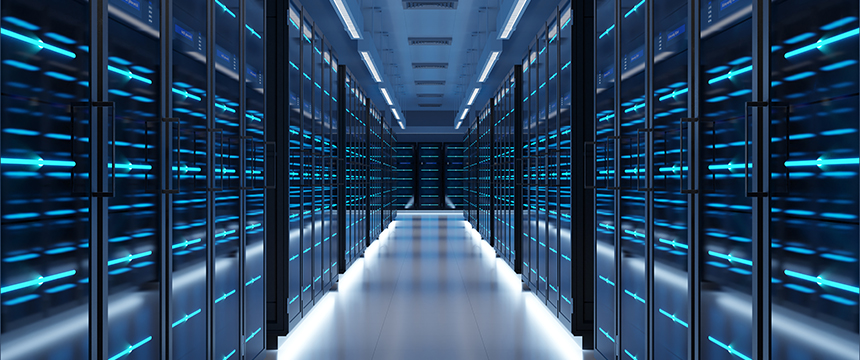How Intellectual Property Fits in Cloud Computing and SaaS Business Models

This article was co-authored by patent engineer Jacqueline P. Campbell and senior counsel Nikhil T. Pradhan from the Boston office of Foley & Lardner LLP.
Various types of intellectual property (IP) can provide companies protection of innovations and maintain or expand competitive advantages. For companies that operate using Software-as-a-Service (SaaS) technologies and/or leverage cloud-based services to support their operations, each type of IP has unique considerations for ensuring it is used effectively. As a starting point, understanding IP requires an understanding of how data is owned, managed, and communicated across various entities in the cloud environment.
This article will outline four main types of IP – patents, trade secrets, copyright, and trademark – to provide a framework for how each type can be independently valuable in the cloud computing and SaaS context.
I. Patents
Patents cover inventions that meet certain standards of being new, non-obvious, and particularly for software, directed to practical applications and technological improvements rather than abstract ideas. Patent protection gives the ability to exclude others from practicing the patented technology for a limited period. For the avoidance of doubt, software technologies are patentable. In the SaaS context, effective patents often focus on the technological underpinnings that make the service valuable to customers.
Utility patents expire twenty years from filing. These timelines mean that for rapidly evolving technologies, such as SaaS, it can be critical to obtain protection towards fundamental functions and processes that are expected to be maintained throughout many software versions, rather than highly specific implementations that could rapidly become deprecated.
In addition to utility patents to protect the functions of SaaS technologies, design patents can be sought to protect ornamental design aspects – the look and feel or other aesthetic features of products. These can include graphical user interfaces (GUIs), such as those associated with unique or specifically valuable charts or reporting tools that are presented to end users. In contrast to utility patents, design patents expire 15 years from the date the patent is granted.
Unlike other forms of IP, patents need to be filed within one year from the first public disclosure, launch, offer for sale, release, or demonstration of the product or technology for which patent protection is sought. This means that a SaaS company should file for patent protection relatively early, often before they have conducted a Series A financing round. Companies are often advised to file a comprehensive provisional application that covers key aspects of the foundational platform supporting their technology as an efficient and thorough filing strategy. Provisional patent applications do not get examined and serve as a placeholder to build off for future patent filings. As such, they are typically less expensive to prepare and file than non-provisional patent applications.
II. Trade Secrets
Trade secrets can be a valuable asset, particularly as a complement to patents as part of a comprehensive strategy that uses each where most effective. Trade secrets protect confidential information by providing the ability to sue someone who misappropriates confidential information. Trade secrets cannot be used to protect against the use of information that is discovered independently or through public means – hence the complementary benefit of patent protection.
Still, trade secrets can be valuable for SaaS companies for at least three reasons. First, they can be a useful cause of action in industries where innovators often move between companies, leading to higher risks of confidential information also being carried over. Second, trade secret protection can extend well beyond the scope of patentable concepts to customer lists, business plans, and other similar valuable information. Third, trade secrets are not limited in time and can potentially continue indefinitely, in contrast to utility patents which last only up to 20 years from filing.
A key requirement for trade secrets is establishing and maintaining proper processes for keeping the information confidential. For SaaS companies that use cloud servers for their own internal purposes as well as the services they provide to customers, it is important to make sure that the cloud service provider has proper protections in place to mitigate the risk of data breaches and other situations that could lead to confidential information being misappropriated or unintentionally made public.
III. Copyright
Copyrights protect original works of expression or authorship, including the expression represented by the written code of software but not the technological ideas that the written code implements. Copyright protection can be helpful because it does not need be registered to allow a cause of action. It should be kept in mind that the focus on expression for copyright protection means that if someone rewrites or makes a workaround within the actual code, it is no longer necessarily protected by the copyright. Nevertheless, SaaS companies should keep copyright protection in mind as part of a comprehensive IP protection strategy, particularly when their code resides in cloud platforms.
IV. Trademark
While not necessarily unique to SaaS/cloud computing technologies, companies should also keep in mind the value of trademarks and other brand protection tools to advance and protect their public brand. A trademark is any phrase, word, symbol, mark, or the like that distinguishes one brand from another. A key part of a trademark is that it is recognizable as an identifier for the good or service offered by the company. As SaaS companies increasingly leverage cloud platforms to support their services, it can be useful to make sure brand imagery is consistently maintained across the multiple, disparate entities involved in the cloud environment.
SaaS companies should remain vigilant to the use of their trademarks by other entities, particularly competitors that engage in comparative advertising. It is not uncommon for SaaS companies to compare their features or results to those of competitors. Companies can set up alerts to monitor their trademarks or use trademark watch services to determine when their trademarks or products are being mentioned. Such alerts and monitoring services can mitigate the effects resulting from trademark dilution or disparagement.
V. Open Source and Other Software Use Considerations
Early on in the development of SaaS technologies, there can be various reasons to rely on open source software to facilitate the development process and get working products in customers’ hands as efficiently as possible. However, companies should be aware of unique obligations associated with using open source software, particularly relating to (1) attribution to the open source software’s existing developers, (2) notifying customers and other users of any obligations associated with the software, and (3) restrictions on using patent, copyright, or other IP-based protections. In addition, the license associated with open source code can make a larger body of code that includes open source code also open source. Where appropriate, companies should take care when incorporating the open source code in their own code to prevent the company’s own code from being treated as open source. Thoughtful tracking and review of software licenses can ensure these considerations are addressed.
Conclusion
IP assets can be indispensable for SaaS companies to protect various aspects of their technology and the services they provide in furtherance of their business objectives. As companies continue to use cloud platforms to provide innovative solutions to customers and end users, these assets can be used to establish and maintain competitive advantages and reduce risks associated with competitors copying or misappropriating these innovations.
To read additional articles from the Clear Skies Through the Clouds series, please click here.
